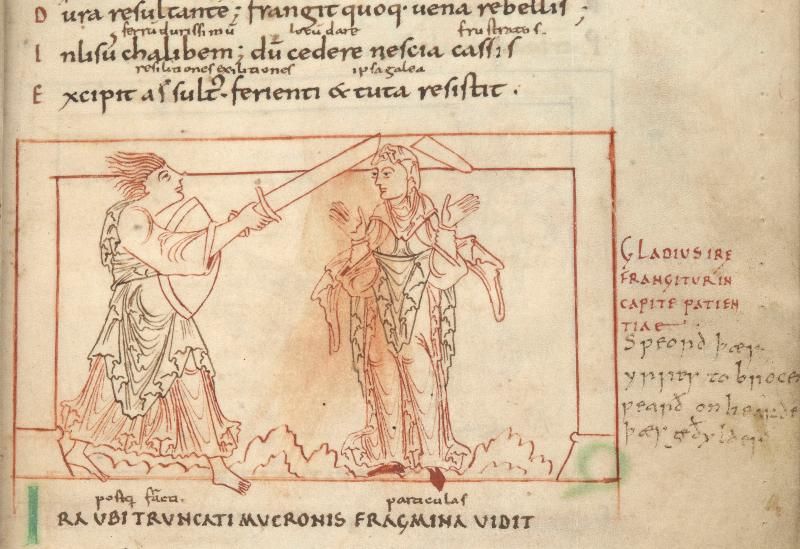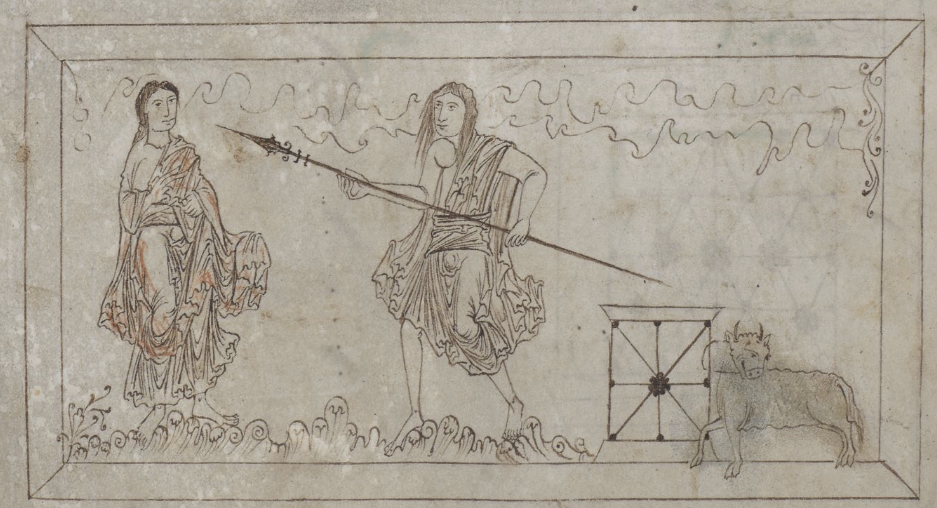Here’s What Happens in a “Comic Book” Drawn by Medieval Monks
Psychomachia pits vice against virtue in a battle for human souls
Back in the day, monks owned the keys to the intellectual kingdom—the ability to read, write and produce the illuminated manuscripts that held religious and educational information for those lucky enough to enter their erudite communities. As the British Library’s Alison Ray notes in the library’s medieval manuscripts blog, the manuscripts they produced often read like comic books— and the medieval illuminated manuscripts of Psychomachia; the war of the soul: or, the battle of the virtues, and vices could hold court against the best modern-day comics and graphic novels.
Psychomachia’s roots go back centuries. At some point during the fourth century, a governor and lawyer named Prudentius decided to try his hand at poetry. A loyal Roman, he underwent what historians have characterized as a midlife crisis and began to devote himself to Latin-language poetry with Christian themes. He eventually became much more famous for his writing than for his governing. Some of the poems he wrote were used for church festivals like Christmas; others, like Pyschomachia, were longer in length and had heavy subject matter concerning sin and human frailty.
Prudentius’ Psychomachia has been called the first pure allegory—a work that gave abstract virtues like chastity and humility and vices like wrath and pride human forms. The poem shows the vices and virtues locked in a spiritual battle for the human soul—a battle that, when put in the hands of medieval monks, became perfect comic book fodder.
Monks were drawn to the story because of their unique position in society, writes Ray: Though war was common during their era, “they could not take up arms against others and were encouraged to fight a spiritual battle instead.” Their students seem to have loved the book, too. At least 300 copies of medieval manuscripts that tell the story survive today.
The copies at the British Library are both English and characterize both the virtues and vices as women duking it out for the human soul. “The deaths of each vice are comically violent,” writes Ray. “Faith beheads Idolatry, Chastity slays Lust with her sword, and Sobriety uses the cross of the Lord to sabotage Indulgence’s chariot before striking her with a flint stone.” Not bad for the medieval-era equivalent of a comic book.
/https://tf-cmsv2-smithsonianmag-media.s3.amazonaws.com/accounts/headshot/erin.png)



/https://tf-cmsv2-smithsonianmag-media.s3.amazonaws.com/accounts/headshot/erin.png)